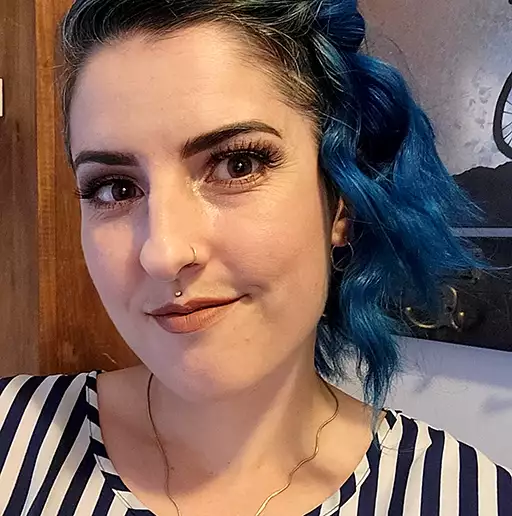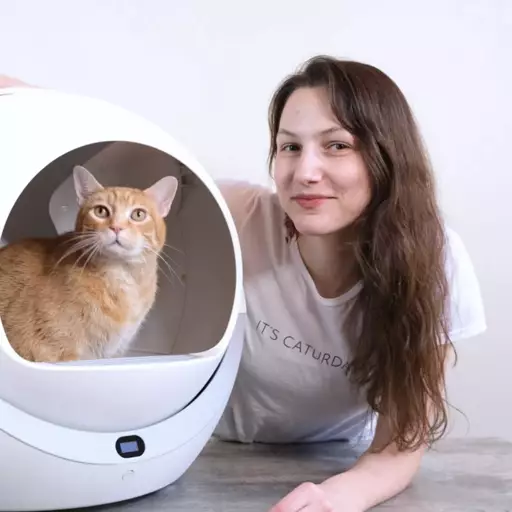Best Cat Food for Hairballs – High Fiber Recipes That Aid Digestion
Quick Guide
Hairballs are a disgusting inevitability of cat ownership. No matter how cute and charming your cat is, chances are, you’ve cleaned up quite a few of his hairballs in the time that you’ve had him. As the name suggests, hairballs form when cats ingest their hair during the grooming process.
What are the Best Cat Foods for Hairball Control?
What are Hairballs, Exactly?
Cats are known for being meticulous groomers, often spending hours licking their fur. Their tongues have evolved to make this process more efficient, with rough, backward-slanting spines (called papillae) that catch on loose hair. Once the fur is in the cat’s mouths, they naturally swallow it.
While most of their fur will pass through their digestive tract without an issue, sometimes it gets caught in the stomach and forms a clump. When that happens, your kitty will need to regurgitate the uncomfortable mass, which comes out in the familiar form of a slimy hairball, or trichobezoar.
According to the Cornell University College of Veterinary Medicine, though they’re common and typically harmless, hairballs do have the potential to cause significant harm to your cat. If he’s unable to vomit it up, the hairball can form an obstruction in his digestive system, preventing him from eating and absorbing nutrients from his food. If your cat exhibits any of the following symptoms, you should call your vet immediately:
- Persistent vomiting or gagging without producing a hairball
- Loss of appetite
- Excessive drowsiness
- Constipation
- Diarrhea
Long-haired cats, or cats that shed a lot, are at a higher risk of forming hairballs. They’re more common in adult cats because kittens typically aren’t as fastidious in their grooming habits. Cats with separation anxiety, OCD, or other psychological issues tend to produce a lot of hairballs as well since excessive grooming is a common symptom in cats with mental disorders.
How to Prevent or Treat Hairballs
Though it’s impossible to prevent hairballs entirely, there are things you can do to decrease their frequency.
- If you regularly brush your cat, he’ll have less loose fur to ingest, and may not produce as many hairballs. There are also conditioners and oils you can purchase in pet stores that are designed to smooth and soften your cat’s fur, or you can use just a dab of normal human conditioner.
- Keeping your cat active with regular exercise and playtime is a great way to ensure speedy, easy digestion.
- Most pet stores sell hairball remedies in gel or paste form, which you can add to your cat’s food. They contain lubricants that can help your cat pass hairballs more smoothly.
- Some vets recommend adding non-toxic oils to your cat’s food to aid in digestion. Some examples are canola oil, butter, and olive oil.
- Fiber supplements such as Metamucil powder can also aid in digestion and allow hairballs to pass through the system without being vomited up. You could also use fiber-rich treats like canned pumpkin or Grapenuts cereal.
- And finally, feeding your cat a special diet formulated to prevent hairballs has been proven to be a beneficial treatment.
Hairball control cat food typically contains a high amount of dietary fiber, which aids in digestion and makes it easier for cats to pass their fur without it getting stuck in their stomachs. Gluten-free food can also lead to a decrease in hairballs, which veterinarians believe is due to the difficulty a lot of cats have digesting wheat gluten.
What to Look for in Your Cat’s Food
There are other things to consider when looking for a new cat food. Cats have very specialized nutritional needs that differ from dogs and other pets. They’re considered “obligate carnivores,” which means they must eat meat in order to receive all of the vitamins and minerals they require. For that reason, veterinarians recommend against giving your cat a vegetarian or vegan food.
Your cat also needs a lot of protein in his diet – at least 26% of his total nutritional intake should consist of protein, according to the Association of American Feed Control Officials (AAFCO). The AAFCO website provides a detailed breakdown of all the nutrients your cat requires, as well as the recommended minimum quantities of each.
Keep in mind that these guidelines are an estimate based on an average healthy, adult cat. We recommend speaking to your vet to determine how your cat’s requirements differ from that estimate. You can find the nutritional information on the back of most cat food bags, or you can visit their website to view the ingredients and nutrient content.
The key ingredients that any cat food should contain are:
- Taurine – 0.15%
- Fat – 9%
- Magnesium – 0.04%
- Arginine – 1.04%
- Arachidonic Acid – 0.02%
Though those numbers may seem small, it is still vital that your cat’s diet includes these nutrients and minerals. Beware of any premium brand of food that does not meet these minimum guidelines.
If your cat has any underlying health issues like diabetes or kidney problems, you should consult with your vet to ensure that the food you choose won’t exacerbate them. Kittens and pregnant cats also have vastly different nutritional requirements and need food that’s specifically designed to cater to their needs.
How to Pick a Cat Food Brand
You should also research the companies that produce your cat food before you feed it to your furry friends. Look for customer reviews to see if other cat owners experienced any problems with the food.
Most good cat food companies proudly advertise where they produce their food, which is a good sign of quality. You’ll want your food to be made in the United States, as other countries are not regulated by the FDA and may not have strict guidelines for safety and nutrition.
Another essential thing to look for is the recall history of the cat food brand. The American Veterinary Medical Association (or AVMA) provides a list of all pet foods recalled by the FDA or the manufacturer. Be sure to read the details of any recalls you find, to ensure that the company doesn’t show a pattern of contamination or faulty ingredients.
Frequently, a manufacturer will issue a recall of their food as a preemptive measure if they suspect possible contamination of any of their products. FDA recalls can also target all brands using a specific ingredient, even if those companies haven’t reported any issues yet. That doesn’t mean you should dismiss all recalls, though, as there have been significant problems with salmonella infections and dangerous compounds found in popular brands of cat and dog food.
To help you narrow down your cat food search, we’ve created a list of 4 top foods for hairball control. We researched each brand extensively to verify the quality of the ingredients and its effectiveness at preventing hairballs. All of these foods are considered premium brands, and their nutrition profiles meet or surpass AAFCO’s recommended minimums.
Reviewed : Best Hairball Control Cat Food
Blue Buffalo Indoor Hairball & Weight Control Chicken & Brown Rice Recipe Adult Dry Cat Food
Blue Buffalo is known for their premium, all-natural pet foods and treats. They’ve got a lot of brand recognition, partially because of the quality of their food, but also because of extensive marketing and availability. The company was founded in 2001, and is still family-owned, despite how large they’ve grown. Though Blue Buffalo has issued several recalls of its dog food and treats, it has never recalled any of its cat food.
Blue Buffalo’s Indoor Hairball & Weight Control cat food is high in fiber and low in fat. The top 6 ingredients are all-natural meats and vegetables. It equals or exceeds all of the minimum guidelines provided by AAFCO, so you don’t have to worry about your kitty receiving the proper nutrition.
Because Blue Buffalo designed this food for weight control as well as hairball control, it’s an ideal choice if your cat is overweight. Obesity is a significant problem in cats and can cause kidney failure and other serious illnesses.
Blue Buffalo’s Indoor Hairball & Weight Control cat food is one of the least-expensive foods we reviewed, despite being a premium brand. It can be found online as well as in most major pet food stores, making it a convenient choice.
Pros
- Easy to find online and in stores
- Low price
- Low calories
- High fiber
- Gluten-free
Cons
- Company has a history of dog food recalls
The quality ingredients, low cost, and wide availability make this food a great value.
AvoDerm Natural Indoor Weight Control Formula with Hairball Relief Adult Dry Cat Food
AvoDerm is manufactured by Breeder’s Choice Pet Foods in Irwindale, California. They use local ingredients such as California avocados to ensure the quality of their food. Their focus is on crafting food for specific pet health concerns such as hairballs and weight control. Breeder’s Choice has recalled one batch of dog treats in 2013 but has never had to recall its cat food.
AvoDerm’s Natural Indoor Weight Control Formula with Hairball Relief cat food is high in protein and low in fat, though its fiber count is a little less than most of the others on the list. The first six ingredients are all-natural meats and vegetables, including avocado fiber. As with the other brands on the list, it meets or surpasses AAFCO’s minimum nutrition requirements.
This food has the lowest calorie count of all the foods we reviewed, coming in at 314 kcal per cup. If you’re having trouble controlling your cat’s weight, this food could be an excellent option for you.
AvoDerm Natural is the most expensive cat food on our list, at almost twice the price of the cheapest option. However, it’s widely available online and in large pet stores.
Pros
- Natural, locally sourced ingredients
- Easy to find online and in stores
- Low calories
- Gluten-free
Cons
- High price
- Company had one recall for dog treats
- Low fiber
If you appreciate locally-sourced ingredients and don’t mind the high price tag, AvoDerm is an excellent choice for your cat, especially if she needs to lose some weight.
Dr. Tim’s Chase All Life Stages Formula Dry Cat Food
Dr. Tim’s is a small pet food company headquartered in Michigan. They primarily manufacture premium dog foods for different life stages and activity levels. Chase All Life Stages Formula is Dr. Tim’s only dry cat food offering. Neither Dr. Tim’s nor its manufacturer, Ohio Pet Foods, have ever had to recall any of their products.
Though this food isn’t explicitly designed for hairball control, its ingredients and nutritional makeup are similar to the other foods we reviewed. Dr. Tim’s is high in protein and in Omega-3 and Omega-6 fatty acids, which have been shown to aid in digestion. However, the fiber count is significantly lower than the other cat foods on the list, and it’s high in calories, so we would not recommend this food for overweight or obese cats.
Chase All Life Stages Formula cat food is the cheapest brand we reviewed. You can only find it in a few select locations in the Midwestern US, Taiwan, and Korea, and it can be ordered online from specialty pet food retailers. You’ll need to consider the relative difficulty in purchasing this food while comparing it to other, more expensive brands.
Pros
- Low price
- No history of recalls
- High protein
- Gluten-free
Cons
- Harder to find in stores
- Low fiber
- High calories
If you’re looking for a nutrient-dense food, and you’re not concerned about your cat’s weight, Dr. Tim’s is a good affordable option.
Chicken Soup for the Soul Indoor with Hairball Care Dry Cat Food
You may be familiar with the brand name Chicken Soup for the Soul, which started in the early 90s as a collection of uplifting true stories. The original book became so popular that the writers created multiple sequels and spin-offs, and eventually sold their company to a new ownership group in 2008, who chose to keep the original name.
The new owners decided to expand into other categories of goods, such as pet food and human food. Chicken Soup’s cat food is manufactured by Diamond Pet Foods, at three locations in the US.
Chicken Soup has had two recalls of their pet foods. In 2007, melamine, a compound linked to kidney failure and death in cats and dogs, was found in their kitten formula and puppy formula foods, and the FDA issued a recall. In 2013, Diamond Pet Foods recalled all of Chicken Soup’s pet products because of suspected salmonella contamination.
It’s high in protein, and it has the highest fiber content of all the foods we reviewed. The first five ingredients are natural meat and barley, and it exceeds most of the AAFCO minimum nutritional guidelines. One cup of Chicken Soup’s Indoor with Hairball Care cat food contains 338 kcal, so it’s another good choice for overweight cats. It also has a high amount of Omega-3 and Omega-6 fatty acids.
Chicken Soup for the Soul is a premium pet food brand, which is reflected in its price. Though it’s not the most expensive food on the list, it comes pretty close. It’s carried in smaller, boutique pet stores, as well as online.
Pros
- High protein
- High fiber
- Gluten-free
- Low calories
Cons
- High price
- Harder to find in stores
- Cat food was recalled twice
Chicken Soup’s nutritional content is the best of all the foods we reviewed. If you’re looking for high-quality food and don’t mind paying for it, you should give this one a try.
A Final Note
We know your cat is family to you. You want your little pal to stay as healthy as possible, but with the vast selection of cat foods on the market today, it can be difficult to determine which one is right for him.
When searching for new cat food, it’s important to do your research before you buy. Many bargain brand cat foods claim to control hairballs but lack the quality ingredients and nutritional value of premium brands. Don’t let the name scare you away though – “premium” is used to describe the ingredients, not the price! There are several affordable options on our list, so you can stay in budget without sacrificing quality.
All of these brands and more are available on Chewy.com, where you can easily compare ingredients, prices, and customer reviews. Take advantage of this valuable resource, and you’ll receive free shipping on any orders over $49.










